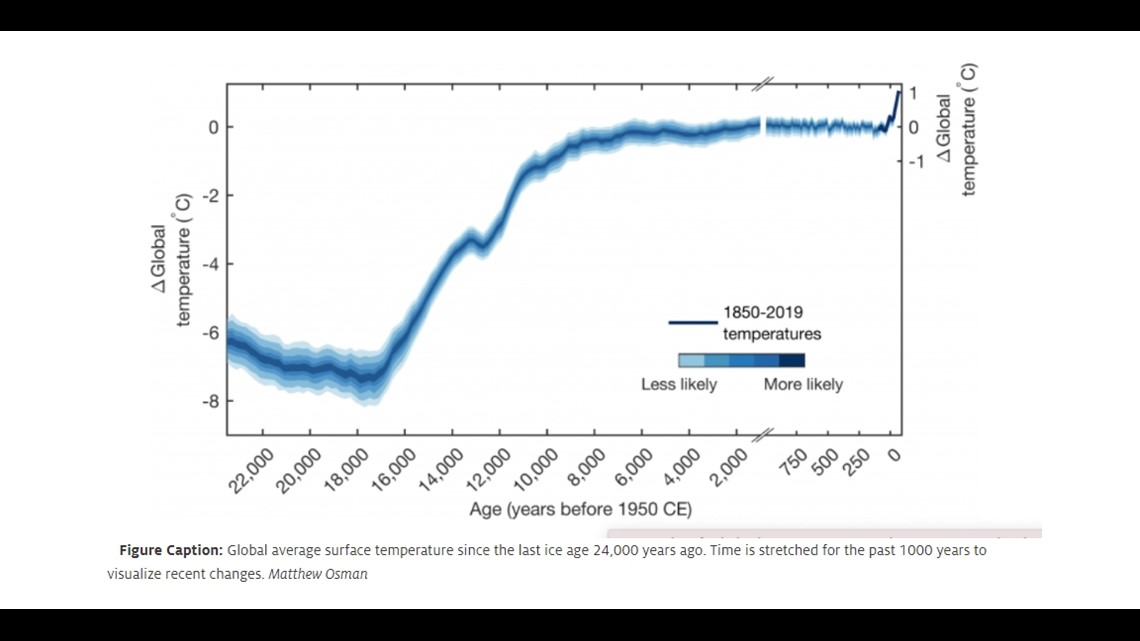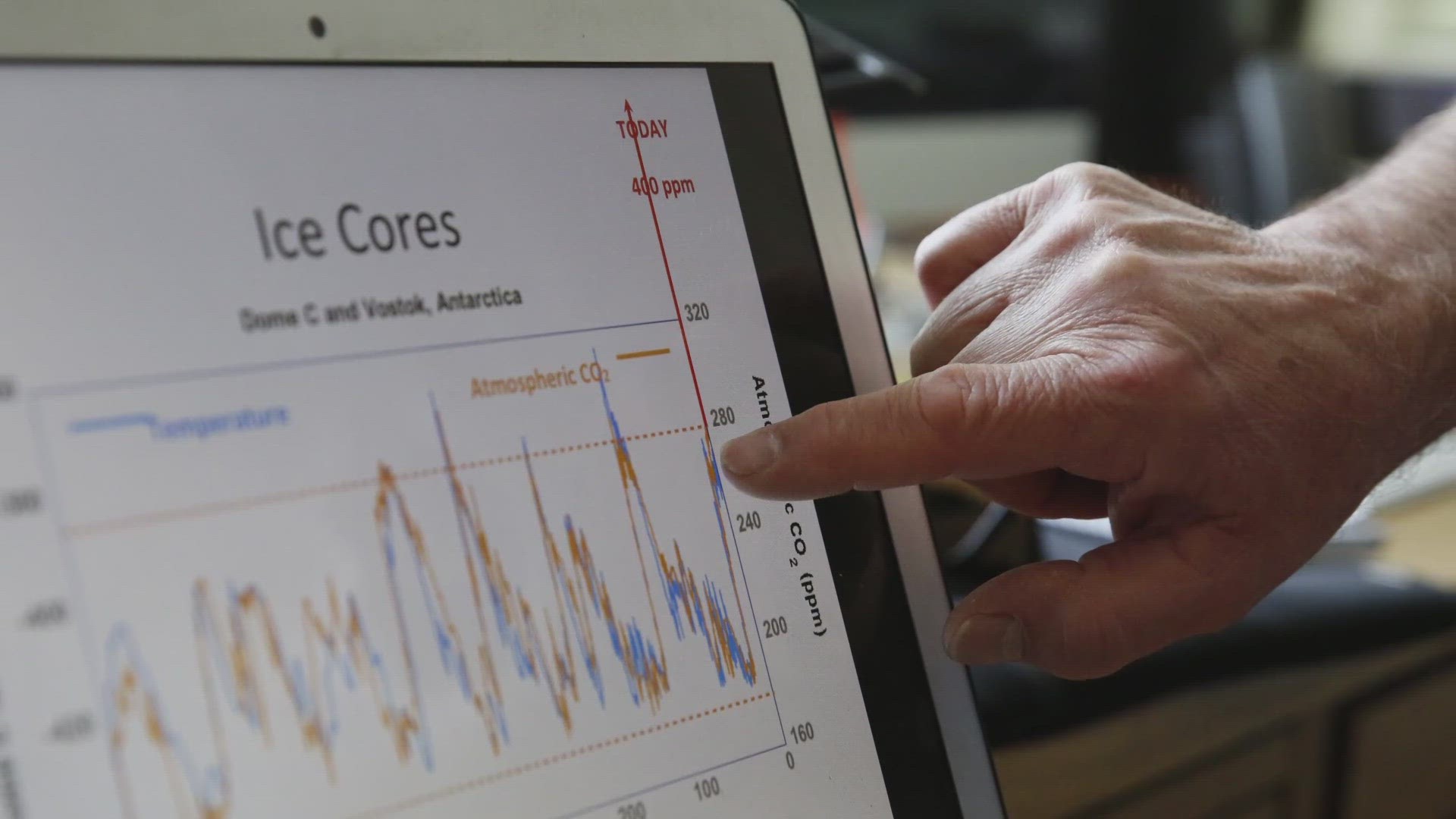ARIZONA, USA — Record-breaking heat waves worldwide are drawing attention to recent studies showing the impact of human-caused global heating.
One study that stands out is a 2021 article published in Nature that contends the rate and magnitude of warming since the industrial age is unusual relative to changes of the past 24,000 years.
THE QUESTION: Is the Earth hotter than past 24,000 years?
THE SOURCES:
Nature
University of Arizona Geoscientists Matthew Osman and Jessica Tierney
National Centers for Environmental Information
Jim Zachos, a paleoclimatologist at the University of California Santa Cruz.
THE ANSWER: 12News can verify that the world's large, credible scientific organizations studying climate change patterns are in agreement that, based on proxy data, the globe is hotter than it has been for at least 24,000 years
University of Arizona Geoscientists Matthew Osman and Jessica Tierney led the effort to analyze the Earth’s climate since the last ice age. They analyzed more than 500 paleoclimate records.
“This reconstruction suggests that current temperatures are unprecedented in 24,000 years and also suggests that the speed of human-caused global warming is faster than anything we’ve seen in that same time,” said Tierney.
The data suggests a general warming trend over the last 10,000 years. The magnitude and rate of warming over the last 150 years “far surpasses the magnitude and rate of changes over the past 24,000 years,” the study concludes.


Scientists rely on what’s proxy data for paleoclimatology research.
According to the National Centers for Environmental Information, proxy data includes:
- Temperature logs from ships and farmers over the past 200 years
- Grape harvest records, meticulously recorded as far back as the 1300s, which reveal summer temperatures.
- Ancient corals that contain isotopes and trace metals, reflecting temperatures during the time they grew.
- Fossilized pollen grains that show what kind of plants grew during different time periods
- Ice cores contain layers over thousands of years with clues of climate patterns and temperatures.
- Tree rings reveal hundreds, even thousands of years of temperature and precipitation
“If you have a second proxy that shows the same pattern as the first, your confidence goes to the moderate level. If you have a third or fourth proxy, your confidence, I would say, goes to high,” said Jim Zachos, a paleoclimatologist at the University of California Santa Cruz.
Zachos said proxies may reflect variables with one to two degrees difference, which is why additional proxies are needed.
“Scientists will question, rightfully so, their reliability,” Zachos said. “Climate scientists will want to verify those proxies. They’ll go out and independently verify, and that’s what’s been happening.”
In other words, Zachos said scientists have cross-checked those findings and have the same conclusions.
Global temperature anomaly
“We have direct measurements on top of the proxies themselves and I would say the rate of global warming we’re seeing is unprecedented in the last tens of millions of years. Never mind the last couple of thousands of years," Zachos said.
“It’s a little bit scary. From a purely scientific perspective, it’s interesting,” Zachos said. “And we’re wondering if we’re still on the slope part of the rise or if we’re going to start seeing the accelerating global warming.”
He said one theory suggests the ocean bears the brunt of global warming, at least for now.
“Heat is being absorbed by the ocean and as the ocean gets warmer and warmer, the real response to greenhouse forces will take hold and the rate of rising temperature will accelerate,” Zachos said.
12News Verify
Did you miss one of our Verify segments? You can find all of our VERIFY stories on the 12News YouTube channel.



